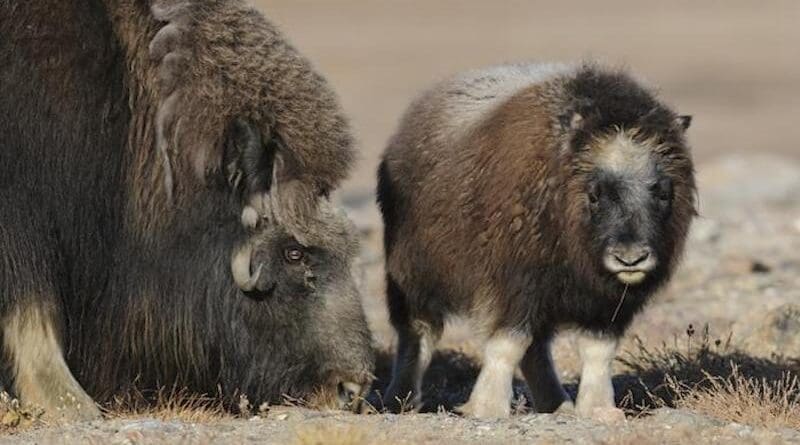Chemistry In Ground Affect How Many Kids Wild Animals Have
When humans get pregnant we go to the pharmacy and buy supplements. We know that pregnant women need supplementary folic acid, iron and D-vitamin.
But wild animals can’t do that.
Instead they tend to go to areas where the ground and therefore also the plants contain more of the essential minerals that they need.
In a newly published large study from Greenland musk oxen have been followed for 25 years to see how their feeding habits affect their reproductive success. And it turns out that when they go to areas with more copper and selenium in the ground, they have more calves.
One of the researchers behind the new study, senior researcher Floris M. van Beest from the Department of Ecoscience at Aarhus University, explains why the results are important for our understanding of wild animals.
– Usually researchers look at the quality of the plants that the animals forage on. They measure major components of the plants such as nitrogen. But we dig a little deeper. We look at trace elements such as copper and selenium in the plants, but also if they are present in the ground beneath the plants.
First study of its kind
The study is the first time that the chemical composition of the ground has been coupled with the reproductive success in animals.
Because of better technology for measuring very low concentration of these elements, it’s now possible to do these kinds of studies, explains Sophia V. Hansson, a researcher at the Centre National de la Recherche Scientifique in Toulouse, France. She’s also one of the researchers behind the study.
“From a geochemical perspective it’s interesting to look at essential and non-essential elements together. Usually, studies tend to focus on the pollutants or the major elements like carbon and nitrogen, but here we look at the essential smaller components – trace elements such as copper and selenium – as well.
“Thanks to technological improvements we can now detect even very low concentrations of such elements. Better than we could 10 years ago.”
She hopes that this study is only the first in a long line of similar research projects mapping the chemical composition of the ground and the effect it has on animals.
“It’s a truly interdisciplinary study, combining chemistry, geology and ecology, and I hope that the approach will be used in other areas as well. Here, we’ve only mapped 25 square kilometers of Greenland, but much more of the arctic area could be mapped in a similar way,” she says.

